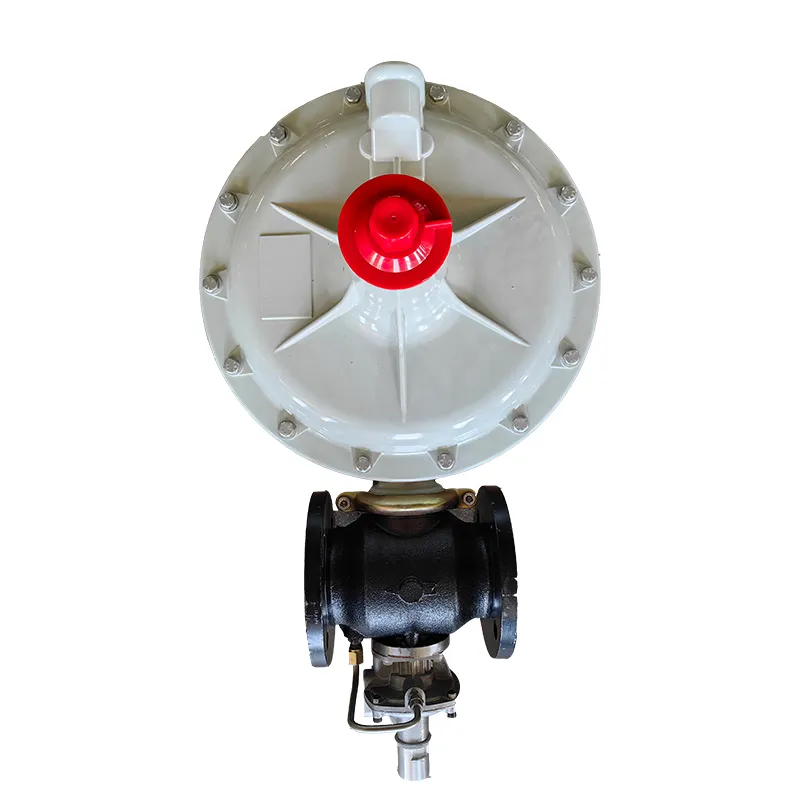
Nov . 26, 2024 06:31
Back to list
Choosing the Right High Pressure Regulators for Your Applications and Needs
Understanding High Pressure Regulators Functionality and Importance
High pressure regulators play a critical role in various industries by controlling the pressure of gases traveling through systems. These devices are essential for ensuring safety, efficiency, and reliability in applications such as gas distribution, manufacturing, and energy production. In this article, we delve into the functionality, types, applications, and maintenance of high pressure regulators to better understand their importance in modern engineering.
What are High Pressure Regulators?
High pressure regulators are devices designed to accept high pressure gas from a source, such as a gas cylinder or pipeline, and reduce that pressure to a desired lower level for use in various applications. They achieve this by utilizing a combination of mechanical components, including diaphragms, springs, and valves, which work together to maintain a steady output pressure, despite fluctuations in input pressure or demand.
The primary purpose of a high pressure regulator is to protect downstream equipment and processes from damage caused by excessively high pressures. By ensuring that the gas pressure remains within specified limits, these devices enhance safety and optimize system performance.
How Do High Pressure Regulators Work?
At the heart of a high pressure regulator's operation is a spring-loaded diaphragm. When high pressure gas enters the regulator, it acts on the diaphragm, which moves as pressure changes. This movement either opens or closes an internal valve that controls the flow of gas to the outlet. When the gas exits the regulator, it does so at a lower, more manageable pressure.
Most high pressure regulators are designed to automatically adjust to changes in input pressure or demand by modulating the valve opening. This self-regulating feature is crucial for maintaining a consistent outlet pressure even in fluctuating operational scenarios.
Types of High Pressure Regulators
High pressure regulators come in various designs to suit different applications and gas types. The most common types include
1. Single-Stage Regulators These are typically used in applications where the pressure drop and flow requirements are minimal. They are simple, cost-effective, and widely used in laboratories and small-scale operations.
2. Two-Stage Regulators These regulators are more sophisticated and are designed to handle larger pressure drops while providing a stable output pressure. They are commonly used in industrial applications where pressure regulation must be precise.
high pressure regulators

3. Dome-Loaded Regulators In certain applications, dome-loaded regulators offer improved performance by utilizing gas pressure to lift the diaphragm instead of a spring. This design allows for greater accuracy and responsiveness to changes in flow requirements.
Applications of High Pressure Regulators
High pressure regulators are essential across various sectors, including
- Gas Distribution Ensuring safe delivery of gases like propane, nitrogen, and oxygen in medical and industrial settings.
- Welding and Cutting Regulating the gas supply in welding applications to achieve optimal flame characteristics.
- Chemical Processing Maintaining consistent gas pressures during critical chemical reactions to prevent hazards and ensure product quality.
- Oil and Gas Controlling the pressure in pipelines and during natural gas extraction processes to enhance safety and efficiency.
Maintenance and Safety Considerations
Regular maintenance of high pressure regulators is vital for their performance and safety. This includes checking for leaks, ensuring that moving parts are lubricated, and monitoring the regulator’s output pressure. Operators should also be trained to understand the specific requirements of the regulators they work with to prevent accidents.
Furthermore, safety features such as pressure relief valves should be in place to mitigate the risk of over-pressurization, which could lead to catastrophic failures.
Conclusion
High pressure regulators are integral to numerous industrial processes, providing a critical function in the management of gas pressure. Understanding their operation, types, and applications can help industries maintain safety and efficiency. As technology advances, the design and capabilities of high pressure regulators continue to improve, making them even more reliable tools for engineers and operators alike. By prioritizing proper maintenance and safety protocols, organizations can leverage the full benefits of high pressure regulation in their operations.
Latest news
-
Safety Valve Spring-Loaded Design Overpressure ProtectionNewsJul.25,2025
-
Precision Voltage Regulator AC5 Accuracy Grade PerformanceNewsJul.25,2025
-
Natural Gas Pressure Regulating Skid Industrial Pipeline ApplicationsNewsJul.25,2025
-
Natural Gas Filter Stainless Steel Mesh Element DesignNewsJul.25,2025
-
Gas Pressure Regulator Valve Direct-Acting Spring-Loaded DesignNewsJul.25,2025
-
Decompression Equipment Multi-Stage Heat Exchange System DesignNewsJul.25,2025

